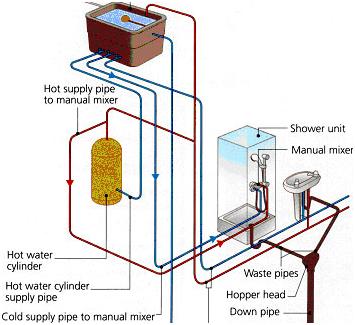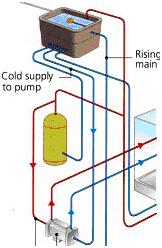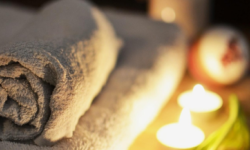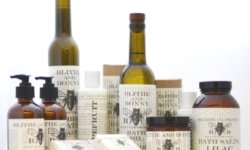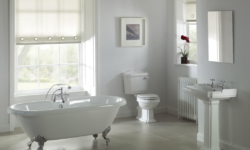Water pressure at the showerhead is important. If it is too low, the flow of water from the rose will be weak. For a shower mixer supplied from the household's stored hot and cold supplies, the bottom of the cold-water cistern needs to be at least 900mm - and preferably 1.5m - above the fixed shower head for pressure to be adequate. For an instantaneous shower supplied direct from the mains, the pressure requirement varies according to the model, but in most homes it is unlikely to be too low, unless, perhaps, you live on the top floor of a block of flats, or in an old house converted into flats. Contact your local water company if in doubt.
Water supply and drainage
Little or no pipework is involved in installing a shower bath, but supply and drainage routes should be worked out for a shower in a separate cubicle. The drainage is often more difficult to arrange than the water supply to the shower, and you may need to get approval from your local authority Building Control Officer. Use 15mm diameter supply pipes. To minimize loss of pressure, pipe runs to the shower should be as short and straight as possible. Avoid using elbow joints at corners - instead, bend pipes if possible to minimize resistance to flow. When routing a pipe, ensure that fixings will not interfere with electric cables or gas pipes. Showers that do mean extra pipework over a bath are instantaneous electric showers and mixer types. For an instantaneous shower you need a cold supply pipe taken direct from the rising main; for a mixer shower, you need hot and cold supply pipes.
Pipework for a shower mixer
For a manual mixer, take the cold supply pipe direct from the cold water cistern to avoid risk of scalding when other cold taps are turned on. Take the hot supply from the hot water cylinder distribution pipe - tee in above cylinder height. For a thermostatic mixer, which has a temperature stabilizer, you can tee in to bathroom supply pipes.
Shower mixers
If you are installing a manual shower mixer over a bath or in a cubicle, you must take the cold supply direct from the storage cistern. Taking the supply from a branch pipe supplying other taps or cisterns is unsafe because when the other fitting is in use, the cold supply to the shower could be reduced so much that the shower becomes scalding hot. Hot water for the shower mixer can be taken from a branch pipe, because there is no danger if the hot supply to the shower is reduced – though it can give you a nasty chilly spray. If you take the hot supply from the cylinder distribution pipe, make the connection at a point above the height of the cylinder top. With a thermostatic shower mixer, however, both hot and cold water can be taken from the branch pipes, as the water temperature is automatically controlled.
Achieving adequate pressure
If you don't have sufficient water pressure to supply a shower at the required position, there are two ways to increase it: you can either raise the height of the cistern or have a booster pump installed.
Boosting water pressure with a dual pump
This boosts hot and cold water tap supplies separately. Some types of pump have a hot supply pipe direct from the cylinder casing, some from the vent pipe. A dual booster pump should be fitted by a plumber.
Raising the cistern
The cold water cistern can be raised by fitting a strong wooden platform beneath it, constructed from timber struts and blockboard. You will also have to lengthen the rising main to reach the cistern, as well as the distribution pipes from the cistern.
Booster pumps
These incorporate an electric motor and must be wired into the power supply. There are two main types. A single pump is fitted between the shower mixer control and the spray and boosts the mixed supply to the spray. A dual pump is fitted to the supply pipes and boosts the hot and cold supplies separately before they reach the mixer. Depending on the model, a booster pump will provide sufficient pressure with as little as 150mm height difference between the water level in the cistern and the spray head. Most dual pumps need to be at least 300mm below the cold tank, but some will provide sufficient pressure to a shower head sited higher than the cold water storage cistern, which allows a shower to be installed in an attic.
Pipework for an instantaneous shower
Here, only a cold supply, direct from the rising main, is needed. This is useful where there is no cold water storage cistern, as mains cold water and stored hot water cannot, by law, be mixed in one fitting.
 (1)Dislikes
(1)Dislikes (0)
(0)
